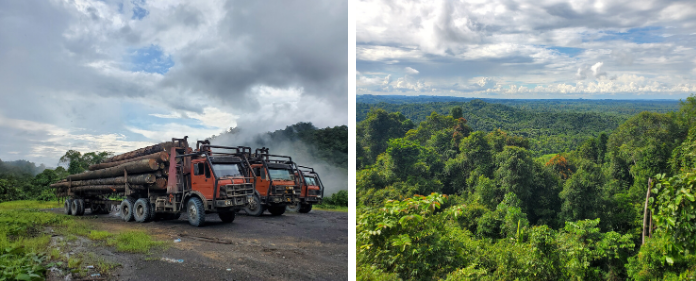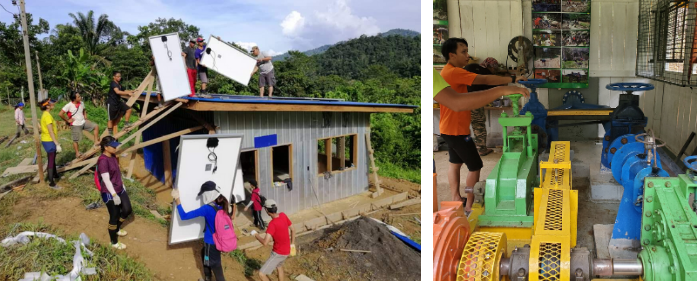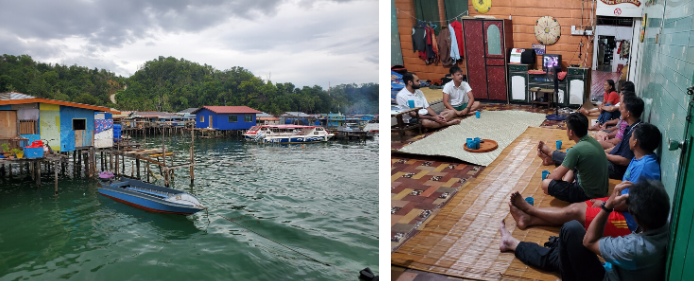Global Challenges, Local Solutions: Series #2
By Mohammad Pakravan, Green Empowerment Technical Program Manager
Without a doubt electricity is one of the most vital infrastructures for any development initiative. However, not any type of electricity source is appropriate or sustainable for development, especially in remote areas.
While many of the community members in the rainforests of Borneo have diesel generators that provide some electricity for TV or phone charging, the diesel generator comes with a big down side: it requires constant supply of diesel. Ironically, accessing a supply of diesel is not a considerable challenge for community members, because in the majority of cases diesel is provided for free by logging companies in exchange for easy access to their lands with no regulations, oversight, or whistleblowers. Communities are divided between those who support the logging companies and those who don’t. If you are against their logging activities on your land, you get nothing. If you support them, you get diesel, cash, food, etc.
So what does this mean for renewable energy development? That it is almost impossible to organize such a project within communities that support the logging companies, which perpetuates illegal and unsustainable logging activities in the region. The story of Bruno Manser, a Swiss environmental activist who spent years in Malaysian Borneo fighting against the logging companies only to mysteriously disappear in 2000, still haunts the elders in these communities.
A free diesel generator with constant donations of diesel is not the kind of electricity that could shift the paradigm and help communities to escape the poverty cycle. In this article I explain why renewable energy is actually cheaper – in the long run – than the “free” diesel energy currently being used.

Logging companies within the rainforests of Malaysian Borneo prepare to transport wood gathered for the day.
Renewable Energy Has Less Environmental Consequences
What is needed is renewable, reliable, and community-led electricity generation. Whether using run-of-river (micro hydro) turbines, or solar PV systems, or wind generation, a renewable source does not come with environmental and natural resource consequences.
This is particularly important because of the strong bond between these communities and nature. There is much cultural respect for the forests that provide almost all the resources for these communities to thrive. The complexity of the ecosystem means that one manipulation could be catastrophic in other aspects in these bio-diverse regions.
Renewable Energy Provides an Income Source
The electricity supply should be reliable so that income-generating activities can be formed and planned based on it. Workshops could be developed, supply of goods and services could be planned, and markets could benefit from the products that need electricity for continuous availability. In just one example, the rivers in the region are a habitat of a certain fish that could be sold in the fish markets in the city up to the price of a whole new diesel generator.
While I was visiting one community, one such fish got caught in our host’s net, and he later prepared it for lunch. I asked him why he is not going to sell it in the market. The first reason was out of respect for his guest (me) and the second, the fish would have gone bad by the time he reached the closest market, which has too few customers for such an expensive fish. If these communities had access to a reliable electricity service, they could plan for fish harvests, freezing fish, and establishing a regular supply to the market that guarantees a constant cash flow for them – and this cash flow is the key for breaking the poverty cycle.

Solar (left) & micro hydro power (right) systems installed in Malaysia as part of Green Empowerment projects.
Renewable Energy is Scalable
In the state of Sarawak, the public utility provider, known as SEB, has an initiative to scale up reliable electricity access to every household in the state by 2025. Their approach is based on either off-grid solar PV, hybrid, or grid expansion. As a government plan, this is a great approach and a necessary measure for reliable and renewable electricity generation for low-resource and remote communities.
During my visit to Sarawak I had a chance to meet with the Sarawak Alternative Rural Electrification Scheme (SARES) engineers and learn about their work and their plans for reaching 100% electrification in the state by 2025. In my opinion, the government plan is a necessary condition but not sufficient from a community-development perspective because the government initiative’s objective is to electrify households – not activities. Each household would receive about 1 kWh of electricity per day. Once the household reaches that value, the meter shuts the access down until the next daily cycle. Additionally, by providing energy access solely for households, schools, churches, clinics, and other communal facilities are not provided with electricity.
Renewable Energy is Not Free – and That’s a Good Thing
The government’s initiative would provide electricity to households for free with a daily consumption cap per household. While this may sound very generous, development experiences of the last four decades across the globe have proven that free services create more problems than they solve and prevent communities from escaping the cycle of poverty.
A community that receives free electricity is likely to expect receiving free cookstoves, free water services, free medicine, and so on. Multiple studies have shown that the nature of some commodity or service being offered as free devalues its effectiveness and how people perceive its value.
Providing an energy source that funds revenue-generating activities, and in turn requires community members to pay for access to electricity and continually invest money back into the energy source, is the way of ensuring sustainable, renewable, community-based energy.
Free systems aren’t maintained by anyone, so there are many broken systems throughout the world. In the next article, I’ll discuss community-owned renewable energy in more detail and provide some of my own ideas for ways to keep these systems sustained.

Local village (left) and group meeting with Green Empowerment (right) in Malaysian Borneo.
** Featured image is of a Green Empowerment solar power project in Malaysian Borneo.

[…] my last article on renewable energy, I mentioned that the public utility provider for the Malaysian state of Sarawak, known as SEB, has […]